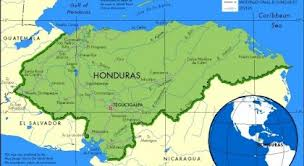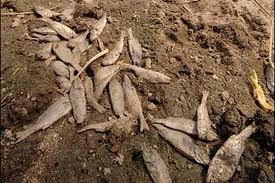Lluvia de Peces:If a fish falls in the forest, and no one is there to hear it, ....

Undoubtedly, everyone has heard the “raining cats and dogs” axiom in his/her life. But, how many people have witnessed an overcast sky dropping herring or tuna? Yet that is what seems to occur on an annual basis in Honduras. Providing an interesting combination of the biblical tenets of manna from Heaven and a blessed endless supply of fish, this unique phenomenon remains shrouded in mystery while still requiring scientific verification.
This fishy phenomenon, coined the “Lluvia de Peces” (from the local tongue), reportedly occurs once or twice per year in the small town of Yoro, Honduras. Consistently taking place in May or June, a particularly massive storm passes through, dumping frightening amounts of precipitation on the little village. According to local reports, at some point during the deluge, hundreds of small silver fish begin to fall from the heavens, interspersed with the raindrops. While the details (and veracity) of these reports are markedly sketchy, one fact regarding the situation has been verified: post storm-- the ground is littered with floundering, still flopping, and gasping for life… fish. Subsequently, the natives gladly scoop up the displaced seafood, and take home an ample meal.
Purportedly occurring since the 1800s, this unusual and mysterious zoological and meteorological event has baffled locals and international scientists alike. The root of this uncertainty is grounded in the overarching question of what is really happening—the origin of the secretive seafood. Credible reports of the remarkable fishfall remain rare. In the 1970s, a research team from National Geographic actually witnessed the event; however, actual proof that the fish were falling from the sky with the rain, and not arriving from some other source, continues to be elusive.
As one might expect, the local Hondurans have an explanation for the mysterious event. The folklore attached to the event makes the murky details crystal clear. To locals, the fish rain is simply a miracle.
According to legend, a Catholic priest named Father Jose Manuel Subirana missioned in the area from 1856 – 1864. During this time that the priest lived among the people, Father Subirana became so anguished and moved by the overwhelming poverty that he witnessed first – hand, he was moved to fall into three continuous days and nights of feverish prayer…supplicating God to provide for these poor people. As the story goes, the initial rain of fish took place shortly after the conclusion of the prayer session, and has continued on a yearly basis since. Due to the divine intercession performed by Father Subirana on their behalf, the residents of Yoro consider their benefactor a saint; although the Catholic Church has never officially conferred sainthood upon him. Regardless, the local population still recognizes and venerates the late priest as a large component of their annual “Rain of Fish Festival.”
For those who do not adhere to the miraculous power of God explanation, this peculiar puzzle is in need of a solution. However, the known facts are few.
1) The researchers from National Geographic, hoping to document the phenomenon, determined that the fish were all of the same species, and were all of fresh-water origin. This fact seems to invalidate the theory of oceanic water spouts. Intriguingly, there are no significant bodies of water anywhere nearby which would provide habitat for this species.
2) While “rainfalls of animals” have purportedly been witnessed throughout history, one has never occurred in the identical location twice…much less on a yearly basis.
3) The ground is covered with still-alive fish after these annual massive storms.
While the proceeding theory has never been officially observed or scientifically tested, biologists and meteorologists believe that exceptionally strong columns of wind that accompany strong storm fronts can, at times, literally scrape the surface of a body of water, and pick-up and carry small marine life elsewhere. These creatures are then deposited wherever the wind finally loses velocity.
Other researchers believe that “tornadic waterspouts” may be the reason behind the phenomenon. These very focused and volatile tornado-like spouts can, in theory, pick –up the fish and literally “fling” them to a new location as they finally escape the violent circular rotation of the winds.
Yet, there is a secondary aspect to the National Geographic involvement in this phenomenon, which might provide the most plausible explanation for its occurrence. The theory postulated by the researchers is this: the magically-appearing fish live underground, and are forced to the surface of the ground by the torrential rainfall. This explanation is given further credibility by the fact that the fish which appear after the storms are purported to be completely blind.
While the aforementioned theory may be the most feasible of the suggested scenarios, it does have its detractors. This explanation lacks the panache to ever be accepted as the final solution to this mystery. After all, fish being washed out of their underground home by torrential rains like earthworms, is not as intriguing as fish falling from the sky. Furthermore, no one has been able to locate an "egress point for this proposed underground river teeming with fish."
Whether one subscribes to the supernatural or natural explanation for Yoro’s mysterious “rain of fish,” the puzzle remains unsolved. Regardless, people who reside in the small Honduran town are not concerned with discovering the “why” or “how” of their local miracle; they simply enjoy an annual all-you-can-eat fish fry and credit the event to an example of divine intervention within their heritage.










